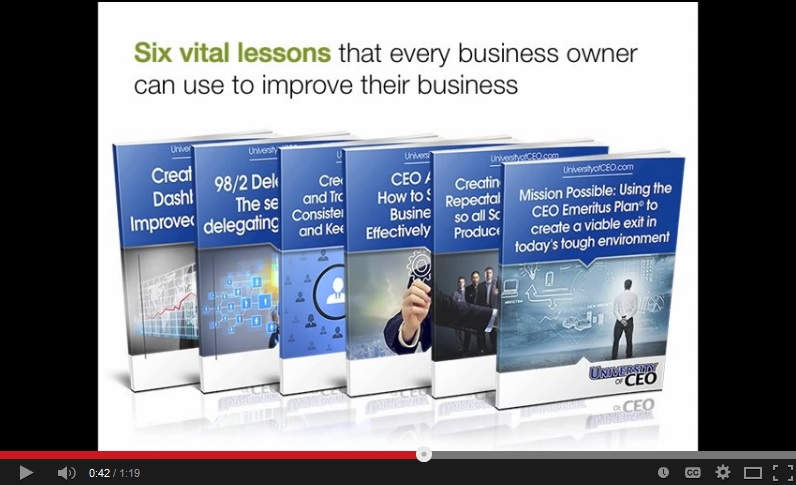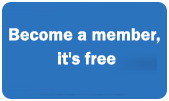This is a guest post by Anders Sundelin, expert in business model innovation, with the popular blog The Business Model Database.
Crowdsourcing or mass collaboration has become popular words for using an external group of people as part of the value creation and value capturing process. Organizations have for a long time used groups of external participants for various contests and market research activities, what is new is the scale, speed and cost of conducting such and other activities.
Early examples were the reward offered by the British government in 1714 for a simple and practical method for the precise determination of a ship’s longitude, with over £100000 given in the form of different encouragements and awards, or the Orteig Prize of $25000 won by Charles Lindbergh offered by hotel owner Raymond Orteig in 1919 to the first allied aviator to fly non-stop from New York City to Paris or vice-versa.
Recently there have been a growing number of initiatives combining awards, the “American Idol” concept with social networking platforms for idea generation, marketing and recruitment purposes. Below are 10 examples of traditional and non-traditional corporate initiatives:
Cisco I-Prize was an idea competition where the winning team got the opportunity to be hired by Cisco to found a new business unit and share a $250000 signing bonus. Cisco also committed it may invest approximately $10 million over three years to staff, develop and go to market with a new business based on the winning idea. Ideas were posted and commented by others and refined by the community, forming new teams of all-stars sharing similar ideas. More than 2500 idea providers from 104 countries presented 1200 ideas. Winners of the different phases were given access to Cisco’s collaboration tools and experts and in the end 12 finalist teams presented for a judging panel. The winning team, based in Germany and Russia presented Cisco with a business plan that improves energy efficiency by using the network as a platform for visibility, manageability and control of energy-consuming systems.
Dell IdeaStorm is an initiative and an online community for anyone to share ideas with Dell and vote for the ones they like. Dell’s objective is to connect with its users and get ideas for new products, services and “the way we do business”. So far, more than 10000 ideas have been submitted and nearly 400 ideas have been implemented. In addition to the open discussion Dell posts specific questions and areas for customers to submit ideas. There are no material rewards associated with IdeaStorm.
Electrolux Design Lab is an annual global design competition open to undergraduate and graduate industrial design students who are invited to present innovative ideas for household appliances of the future. There are different themes every year and visitors of their online webpage can vote for statements to indicate desire for future themes. Finalists are invited to participate and present their ideas to a jury of high-level designers and experts. Electrolux awards three prizes: 1st place is 5000€ and a 6 month paid internship with accommodations at one of Electrolux global design centers. The 2nd place winner receives 3000€ and 3rd place 2000€. The competition is very much promoted as a way to get jobs and business opportunities and several finalists are currently employed by the company.
Goldcorp issued a now famous challenge to the world’s geologists when they provided all their data on the Red Lake mine online if the contestants showed them where they would be likely to find the next 6 million ounces of gold. The prize was a total of $575000 with a top award of $105000. More than 1400 scientists, engineers, and geologists from 50 countries downloaded the company’s data and started their virtual exploration. The winners, who had never even seen the mine, were a collaboration by two groups in Australia which together developed a 3D graphical depiction of the mine, used geological-modeling software and database mining tools to find the gold. According to Fast Company Goldcorp has drilled four of the winners’ top five targets and have hit on all four.
IBM Innovation Jam has become a famous example where the company’s researchers, employees and outside experts are invited to join in a virtual brainstorm session, posting their ideas, commenting and voting for their favorites. The jam consists of interlinked bulletin boards and related web pages on IBM’s intranet, supported by systems for centrally managing activity and extracting useful answers to important questions. In the 2006 edition, the largest IBM online brainstorming session ever held, there were 150 000 participants from 104 countries and 67 companies. As a result 10 new IBM businesses were launched with seed investment totaling $100 million.
My Starbucks Idea is an initiative and an online community to gather product ideas, experience ideas and involvement ideas from the crowd. Visitors can share their ideas, view other’s ideas, comment and vote to make ideas popular. There is also a blog on ideas in action for users to see how Starbucks is putting top ideas into action. Ideas are chosen based on algorithm (number of votes, comments and recency of post) and by “Idea Partners” inside Starbucks. Providers of ideas that get implemented may be given credits on the site but won’t be compensated in any other way.
Netflix Prize is an open competition to improve a collaborative filtering algorithm helping Netflix customers find new movies they would like. In the first challenge the company provided a data set of 100 million of the ratings customers previously supplied and made it available to any programmer together with a baseline of prediction accuracy to beat. To win the competition, the programmers needed to share their methods with Netflix, describe the algorithm for the world and provide a non-exclusive license to Netflix. Every suggested algorithm (more than 44000 valid submissions) was broadcasted on a leaderboard to fuel competition. The grand prize, $1000000, was reserved for the entry which could improve Netflix’s algorithm for predicting ratings by 10%. As long as no team won the grand prize, a progress prize of $50000 was awarded every year for the best result thus far. The competition took place between October 2006 and July 2009. In August 2009 Netflix announced it would run a second competition with shorter time spans and the challenge based on demographic data rather than previous ratings.
Nokia Mobile Games Innovation Challenge invites developers to submit mobile gaming concepts to any Nokia N-Gage, Java or Symbian-based Series 40 or S60 device. The three most innovative game concepts are offered Nokia Publishing pre-production contracts, targeting publication or winning concepts and the first winner is awarded with 40000€, the second 20000€ and the third 10000€ for further development of game concepts. The winning participant must agree that Nokia has the right to acquire, subject to a mutually acceptable agreement, the intellectual property or exclusive license to the game concept.
P&G Open Innovation Challenge are events that so far have taken place in the UK where design professionals and entrepreneurs are invited to submit propositions for products which fit P&G’s criteria and have the potential to build businesses worth over $100m. To protect the idea providers’ intellectual property, ideas are not seen by P&G but are reviewed by its partners National Endowment for Science, Technology and the Arts (NESTA), British Design Innovation and Oakland Innovation. Up to ten of the most promising ideas are given access to feedback, advice and up to £25000 in financing to develop the ideas into a stage at which they can demonstrate commercial viability. Up to five of the strongest applicants are then given the chance to present their finalized ideas to P&G which may decide to invest in the idea and sign contracts. If P&G doesn’t invest the creator is free to take the proposition to other brands and or investors.
Virgin Earth Challenge is a science and technology prize to find a viable technology which will result in the net removal of anthropogenic, atmospheric greenhouse gases each year for at least ten years without countervailing harmful effects. The individual or group that is able to demonstrate a commercial viable design will be awarded $25 million, making the award the largest science and technology prize in history to be offered. The challenge will initially be open for five years with the judges including Richard Branson and Al Gore, meeting annually to determine whether a design has been submitted during the previous year that should win the prize.
Questions to ask before using the crowd
- Will the expected output answer key business needs?
- What will be the value proposition towards participants?
- Will the organization be able to motivate and incentivize participation?
- Are the tasks suitable for distributed activities?
- Can the tasks be broken into small chunks?
- Are there adequate resources and capabilities within the organization to manage the process?
- Are there effective filters, such as the crowd itself that can effectively identify what is valuable and what is crap?
- What will be the added costs and risks from the activity?
- What would happen if other actors in the value network or competitors knew about or participated in the activity?
- Will the organization be able to manage the costs and risks?
- Will the business benefits exceed the added costs and risks?
- Should the invitation be open or closed?
- Can anyone participate or should there be criteria of approval?
- What information should be provided and what should be kept secret?
- Should the participants see each other’s ideas or contributions?
- Should it be possible for participants to build on each other’s ideas?
- How should own and participant’s intellectual property rights be managed?








